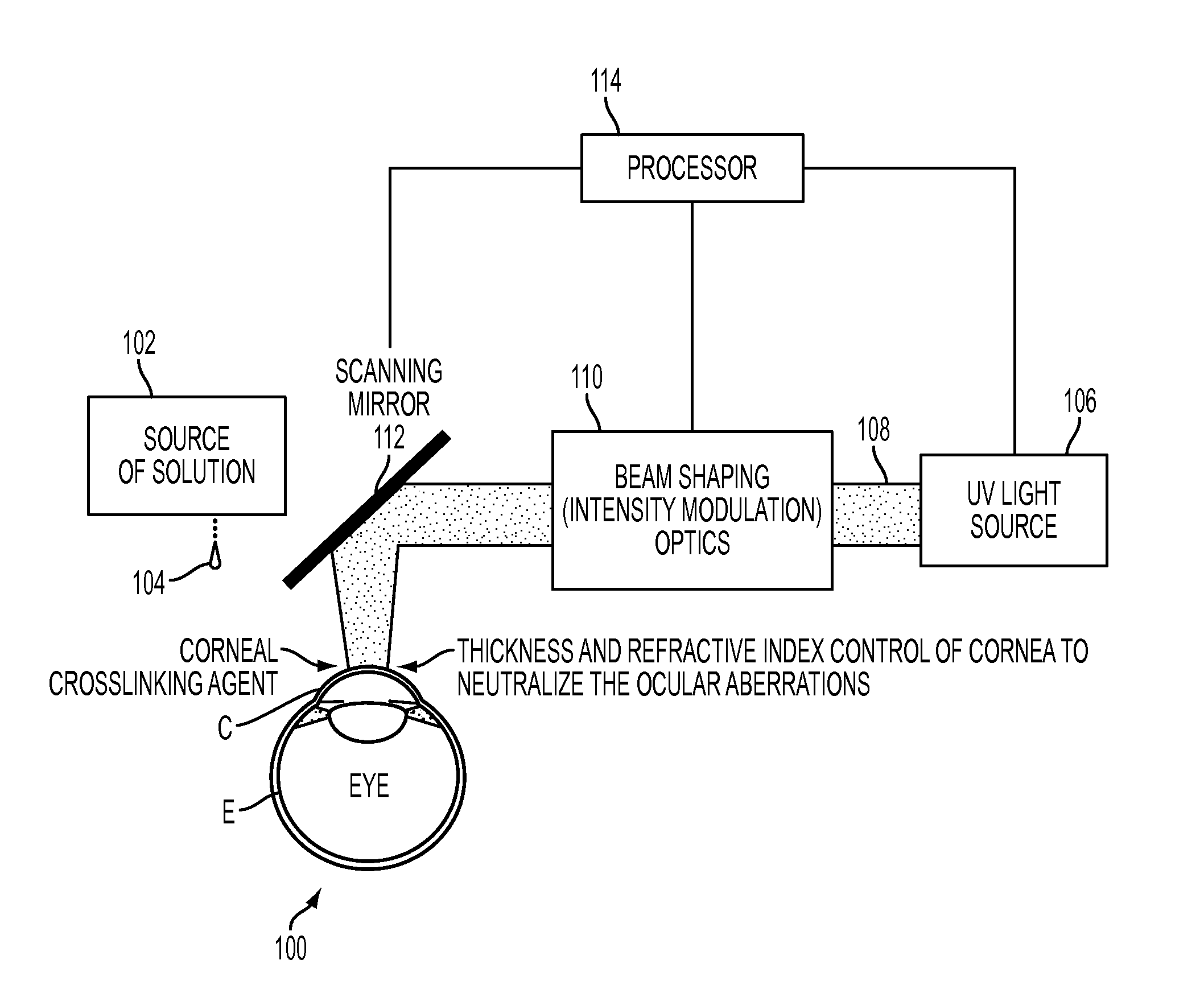Aberration control by corneal collagen crosslinking combined with beam-shaping technique
a crosslinking and beam-shaping technology, applied in laser surgery, radiation therapy, therapy, etc., can solve the problems of thinning and weakening of corneal tissue, severe eye damage, and a wide range of complications that impair vision
- Summary
- Abstract
- Description
- Claims
- Application Information
AI Technical Summary
Benefits of technology
Problems solved by technology
Method used
Image
Examples
Embodiment Construction
[0045]FIG. 1 shows a system 100 for use on the cornea C of a living human or other eye E. A source 102 of riboflavin solution 104 is used to apply the riboflavin solution to the cornea. Then a laser or other UV light source 106 emits a beam 108 of laser light at the cornea via beam shaping (e.g., intensity modulation) optics 110 and a scanning mirror 112 to perform corneal collagen crosslinking. The distribution of laser light provided by the laser (e.g., exposure time at a particular location, intensity at a particular location, or both) is calculated to correct higher-order wavefront aberrations that have been detected as taught, e.g., in the above-cited U.S. Pat. No. 5,777,719. Alternatively, only lower-order aberrations (through second order), or any orders or combinations of orders, may be corrected. Once the aberrations have been detected, as taught in the above-cited '719 patent or in any other suitable manner, the system 100 can be controlled automatically by a processor 114...
PUM
 Login to View More
Login to View More Abstract
Description
Claims
Application Information
 Login to View More
Login to View More - R&D
- Intellectual Property
- Life Sciences
- Materials
- Tech Scout
- Unparalleled Data Quality
- Higher Quality Content
- 60% Fewer Hallucinations
Browse by: Latest US Patents, China's latest patents, Technical Efficacy Thesaurus, Application Domain, Technology Topic, Popular Technical Reports.
© 2025 PatSnap. All rights reserved.Legal|Privacy policy|Modern Slavery Act Transparency Statement|Sitemap|About US| Contact US: help@patsnap.com



